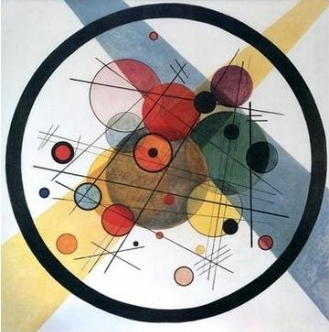
|
|
| Purpose | Participants | Meetings | Publications | Calls | Reports | Private | Contact |

|
|
The participants to this project comprise two teams from the Inria, and two external, one from the MRC Clinical Sciences Centre, Faculty of Medicine, Imperial College London, Hammersmith Hospital Campus, London, UK, and one from the INRA (Jouy-en-Josas/Paris). In all cases, the lists of participants for each team do not include students who may arrive at (or return to) the team during the duration of the project.
HELIX, Inria Rhône-Alpes - Coordinator team
The HELIX team is located in Montbonnot (Grenoble) and on the Campus of the DOUA (Villeurbanne, next to Lyon). The members of the group in Grenoble, headed by Alain Viari since Jan. 2005, work in the Rhône-Alpes research unit of the INRIA. The members in Lyon are part of two groups within the Laboratory of Biometry and Biological Evolution (LBBE - CNRS/Université Claude Bernard de Lyon, UMR 5558), directed by Dominique Mouchiroud since January 2007: the group Bioinformatics and Evolutionary Genomics headed by Manolo Gouy, and the group BAOBAB headed by Marie-France Sagot. Two international teams are associated with the HELIX project: the SwissProt group, headed by Amos Bairoch within the SIB (Swiss Institute of Bioinformatics) in Geneva, and the Computer Science Department of the University of São Paulo. HELIX is composed of computer scientists, mathematicians and biologists (bio-mathematicians and bio-informaticians).
The objectives of the HELIX team are the design and development of methods and tools for modelling and analyzing genomic data. Such data comprise, in addition to biological sequences, a diversity of other experimentally-obtained information. In all instances, the research activities of the team are dictated by biological questions, and the results, in the form of algorithms and computer tools, are evaluated as to their relevance in computer science or mathematics, and in biology.
Among the main topics covered by the team are (DNA/RNA and protein) sequence and structure analysis, comparative genomics and evolution, computational proteomics and transcriptomics, modelling and analysis of metabolism, modelling and simulation of genetic regulatory networks.
HELIX participants to the ARC
The HELIX participants to the ARC include members from both Grenoble and Lyon. The coordinator of the ARC is in Lyon. They include:
WEB page of BAOBAB: http://www.inrialpes.fr/helix/people/sagot/team/index.html
MISTIS, Inria Rhône-Alpes
The aim of MISTIS is to develop statistical methods for applications in image analysis and signal processing, and particularly for biological and medical applications. The main research topics of MISTIS are mixture models, Markovian models and non-parametric methods.The Markov model approach is the more relevant to this project. It is related to graphical models. In most applications of interest, the associated statistical analysis is not straightforward. Typical issues are related to the neighbourhood structure to be chosen when not dictated by the context, the possible high dimensionality of the observations and consequent parameter estimation problems. The MISTIS team has expertise in this field, which includes various aspects of parameter estimation procedures, possible model selection methods and experience in various applications.
MISTIS participants to the ARC
The participants of MISTIS to the project are Florence Forbes (head of MISTIS), Juliette Blanchet and Matthieu Vignes.
WEB page of MISTIS: http://www.inria.fr/recherche/equipes/mistis.en.html
Nuclear Organisation Team at the MRC, Imperial College London
The Nuclear Organisation team belongs to the second largest Medical Research Centre core-funded research institute located at Imperial College London (Hammersmith Hospital Campus, London, UK) and is headed by Ana Pombo since 2000. The team uses a combination of high-resolution imaging, biochemistry and molecular biology techniques to study the genome function. It uses top-down and bottom-up experimental approaches studying the role of chromatin architecture in gene expression and how the clustering of RNA polymerase molecules in factories regulates gene expression and chromosome structure in interphase.
Nuclear Organisation Team participants to the ARC
The participants are Ana Pombo and Miguel R. Branco. Miguel Branco ledt for a postdoc elsewhere in the middle of 2007. In its place, Inés de Jesus joined the team as a PhD student of Ana Pombo co-supervised by Marie-France Sagot, on a topic that is different from the one of this project but with which it has some connections.
WEB page of Ana Pombo: http://www.csc.mrc.ac.uk/ResearchGroups/NuclearOrganisation/NuclearOrganisationResearch.html
SSB, Inra
The SSB (Statistics for Systems Biology) team is mainly part of the Department of "Mathematics and Computer Science for life sciences" of the Inra. It gathers statisticians located in the Paris area (Jouy-en-Josas, Paris, Évry). The group is headed by Sophie Schbath.
The objectives of the SSB team are to develop and promote statistical methods for various problems arising in Computational Biology. Data of interest are biological sequences, microarray data and interaction networks. Here are some topics covered by the SSB team: statistics of motifs, gene prediction, local and alignment scores, analysis of microarray and CGH array data (experimental design, differential analysis, diagnostic), random graph models, network inference, network motif detection.
SSB participants to the ARC
The participants are Sophie Schbath (head of SSB), Etienne Birmelé, Jean-Jacques Daudin, Michel Koskas, Catherine Matias, Franck Picard, Stéphane Robin. In September 2007, Franck Picard obtained a CR2 position at the CNRS in the group of Marie-France Sagot.
WEB page of SSB: http://genome.jouy.inra.fr/ssb/